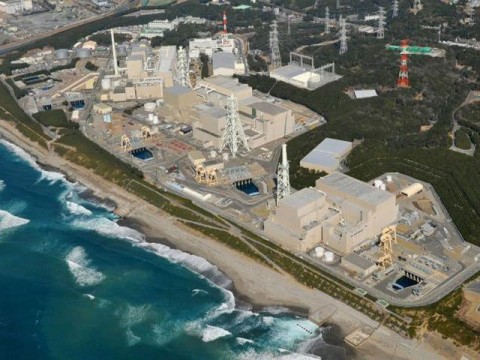It looks like you're using an Ad Blocker.
Please white-list or disable AboveTopSecret.com in your ad-blocking tool.
Thank you.
Some features of ATS will be disabled while you continue to use an ad-blocker.
share:
reply to post by thorfourwinds
Japan Probe Finds Nuclear Disaster Response Failed
By YURI KAGEYAMA, Associated Press – 1 hour ago
Really? Who would have thunk it!
And one hears so much talk of this disaster... in the past tense. When one sees it in the news at all. As if it's over and done with.
Japan Probe Finds Nuclear Disaster Response Failed
www.abovetopsecret.com...
started December 26, 2011
The disaster continues, while the masses sleep...
Japan Probe Finds Nuclear Disaster Response Failed
By YURI KAGEYAMA, Associated Press – 1 hour ago
The 507-page interim report, compiled by interviewing more than 400 people, including utility workers and government officials, found authorities had grossly underestimated tsunami risks...
...a better response might have reduced the core damage, radiation leaks and the hydrogen explosions that followed at two reactors and sent plumes of radiation into the air, according to the report.
Sadder still was how the government dallied in relaying information to the public, such as using evasive language to avoid admitting serious meltdowns at the reactors, the report said.
The government also delayed disclosure of radiation data in the area, unnecessarily exposing entire towns to radiation when they could have evacuated, the report found.
www.google.com...
Really? Who would have thunk it!
And one hears so much talk of this disaster... in the past tense. When one sees it in the news at all. As if it's over and done with.
Japan Probe Finds Nuclear Disaster Response Failed
www.abovetopsecret.com...
started December 26, 2011
The disaster continues, while the masses sleep...

RADIATION WATCH 2011
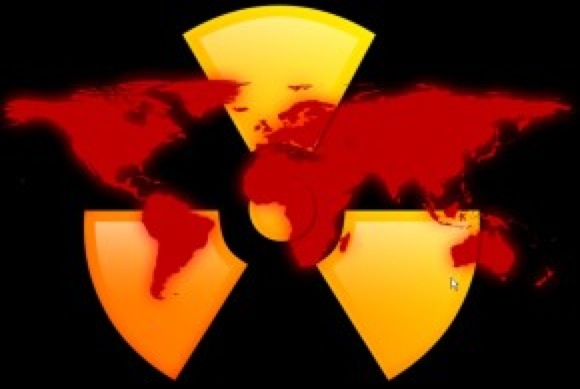
[color=Cyan]The total number of days between Friday, March 11, 2011 and Saturday, December 31, 2011 is 295 days.
[color=FDD017]The radiation poisoning of we, the people, our children, pets, food, water and our land
has continued unabated - 24/7/365
[color=Chartreuse]
- for 8 months, 29 days ... which is:
• 25,488,000 seconds
• 424,800 minutes
• 7,080 hours
• 42 weeks (rounded down)
One again, are we any closer to a solution to the Fukushima multiple melt-throughs disaster/fiasco spewing life-altering clouds of radiation 24/7/365


Peace Love Light
tfw
[align=center][color=magenta]Liberty & Equality or Revolution[/align]
reply to post by thorfourwinds
Johnny Cutcorners.
Woulda', shoulda', coulda' ...
Tepco Cut Backup Power at Fukushima Before Crisis, Sankei Says
By Chisaki Watanabe - Jan 18, 2012 9:15 PM ET
Tokyo Electric Power Co. (9501) disconnected an emergency power source at its Fukushima nuclear plant four months before the earthquake and tsunami in March last year wrecked the station, the Sankei newspaper said.
The supply was cut during maintenance work in November 2010 and wasn’t reconnected, the paper reported, without citing the source of its information.
The backup would have provided power for transmitting temperature and radiation data from monitors near the Fukushima Dai-Ichi plant’s reactors and helped assess the severity of the situation once the main electricity supply was knocked out, the Sankei said.
Tokyo Electric is checking the Sankei report and can’t immediately comment, spokeswoman Ai Tanaka said.
To contact the reporter on this story: Chisaki Watanabe in Tokyo at [email protected]
To contact the editor responsible for this story: Peter Langan at [email protected]
www.bloomberg.com...
Johnny Cutcorners.
Woulda', shoulda', coulda' ...
edit on 1/19/2012 by this_is_who_we_are because: comment



[color=FDD017]The total number of days between Friday, March 11, 2011 and Friday, January 6, 2012 is
315 days.
[color=Cyan]The radiation poisoning of we, the people, our children, pets, food, water and our land
has continued unabated - 24/7/365
[color=FDD017]
- for 10 months, 9 days ... which is:
• 27,216,000 seconds
• 453,600 minutes
• 7560 hours
• 45 weeks
[color=Chartreuse]Once again, are we any closer to a solution to the Fukushima multiple melt-throughs disaster/fiasco spewing life-altering clouds of radiation 24/7/365
Meanwhile, some really good information on radioactive waste in Central Asia (the waste is still the same deadly stuff, no matter the geographical location on the planet) by legendary correspondent Simon Reeve of Meet the Stans fame.
Our inner feeling is that this one facet of nuclear power is most likely the Achillies Heel of the entire nuclear energy issue.
Since the nuke industry has not been able to come up with the promised answer for the long-term disposal and waste storage issue in over 50 years and there is no technology nor solution in sight, that may be the criteria for immediately stopping further licensing and subsequent construction of any new nuclear power plants.
Postcards From the Edge
Simon Reeve walks into a radioactive waste dump in Kyrgyzstan, Central Asia, while making his TV series Meet the Stans. The Meet the Stans series took Simon from the far north-west of Kazakhstan, by the Russian border, east to the Chinese border, south through Kyrgyzstan and Tajikistan to the edge of Afghanistan, and west to Uzbekistan and the legendary Silk Road cities of Samarkand and Bukhara.
I cant imagine anyone switching off who stays for the first five minutes as Simon Reeve is a bestselling author and broadcaster and in recent years he’s traveled to scores of countries around the world for a series of BBC television documentaries.
And from correspondent StarryBrooke in Chiba, Japan, putting a human face on the exploding Japanese concerned citizens anti-nuclear movement with wonderful, truly inspiring photos and commentary.
Saturday, January 14, 2012
Anti-Nuclear Energy Demo in Yokohama
Yesterday I participated in an anti-nuclear power demonstration in Yokohama, which took place in conjunction with Global Conference for a Nuclear Power Free World ... and at this, my fourth demo, I realized how much I enjoy taking pictures of the eclectic group of people--monks, grandmothers, Catholics, college students, a German Green Party politician, and other citizen activists--who gather with the most interesting signs and messages for the world.
Here are some signs and images, with translations as necessary.
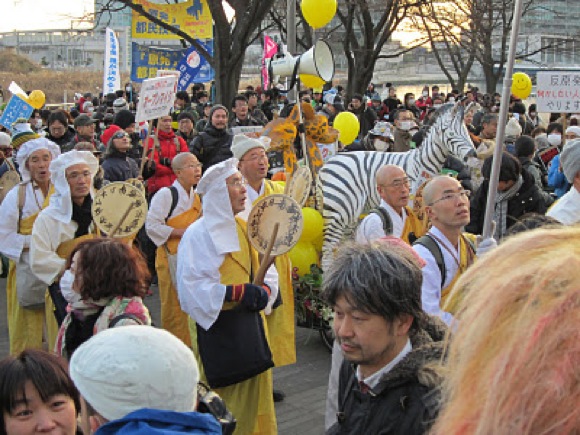
If we are a country that believes in the "power of the word," we are a country that fools.
We read "cold shutdown" as "thought shutdown."
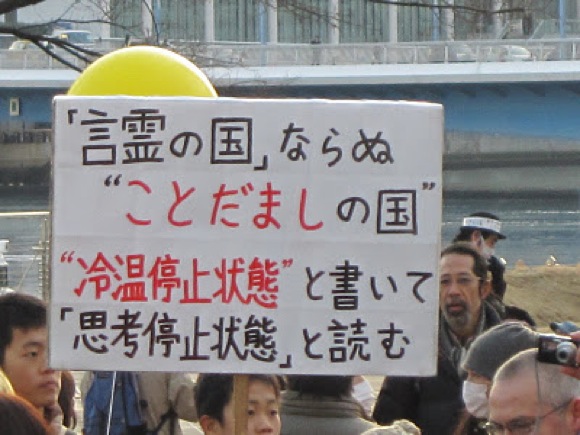
The water flows; the wind touches our bodies; the sun beams.
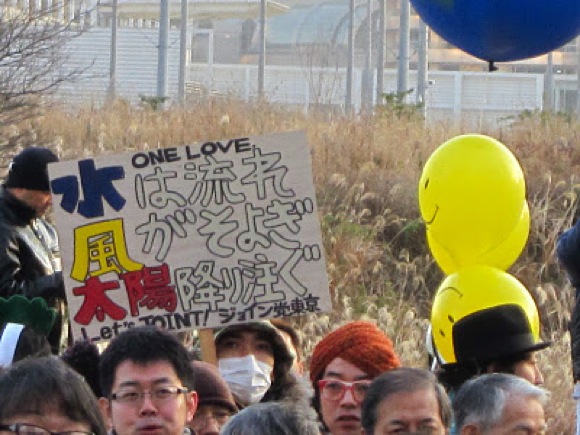
The food radioactivity standard is too high. Stop immediately!
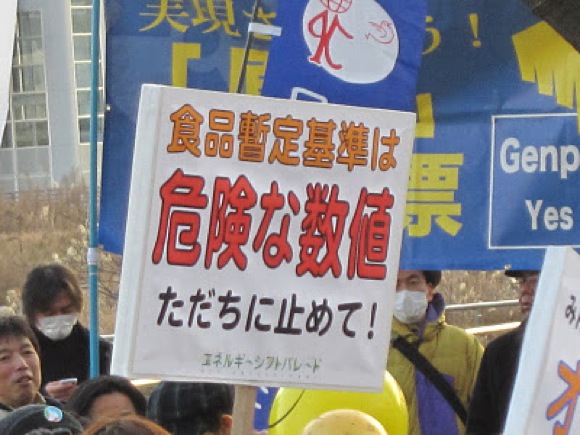
Against the agreement to nuclear power.
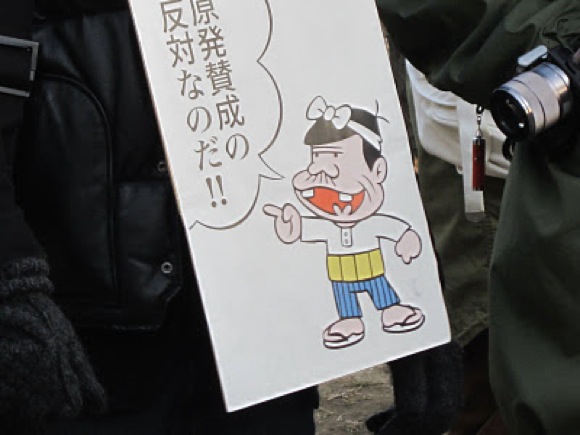
Save Fukushima children from radioactivity!
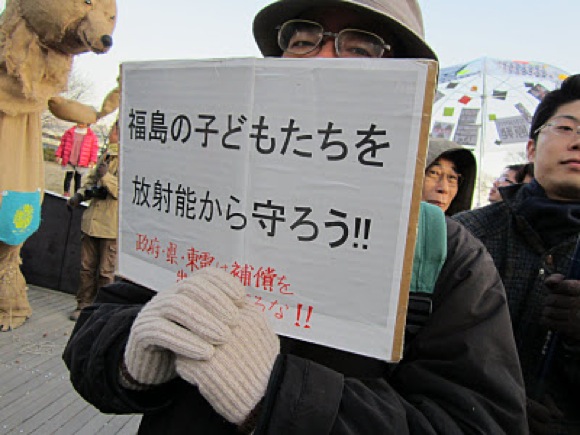

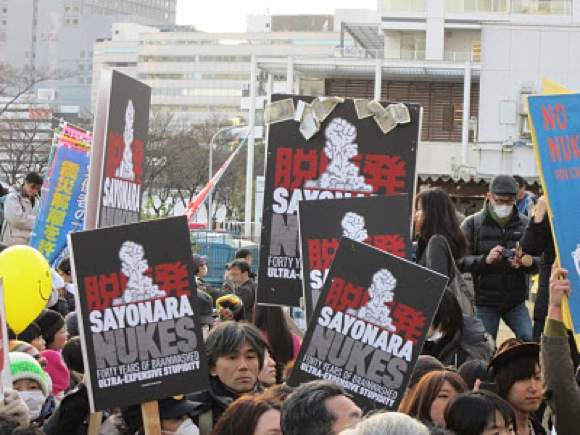
Graduate from nuclear energy
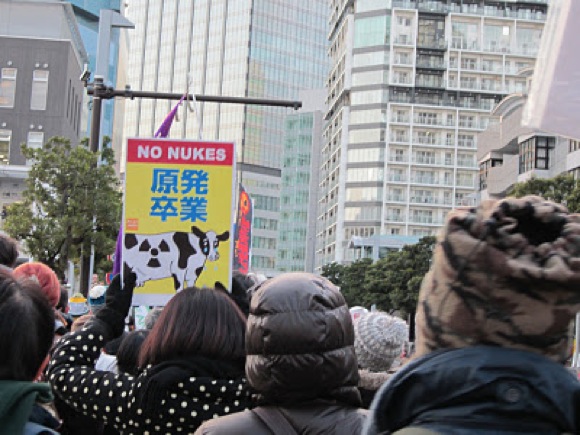
Stop nuclear energy, with the zebra!
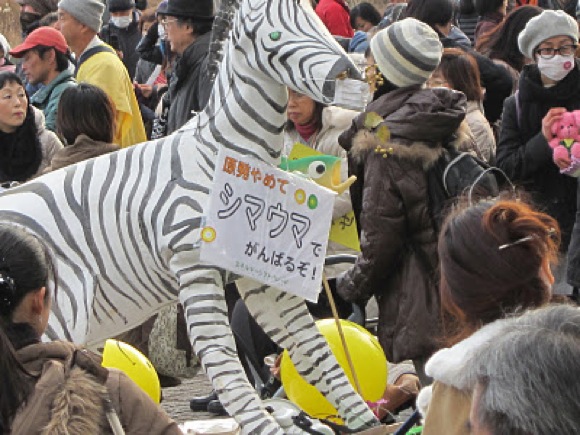
Stop the dangerous cycle of pluthermal power. Stop the use of MOX fuel at "Genkai," "Ikata," "Hamaoka," "Tomari," and "Takahama." Six factories for reusing nuclear waste! Restarting "Monju" is one step towards the collapse of Japan.
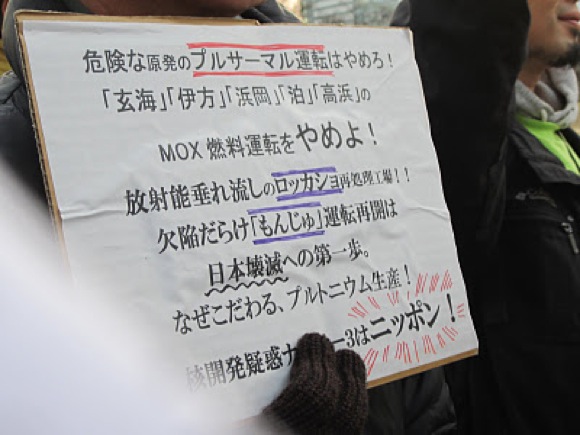
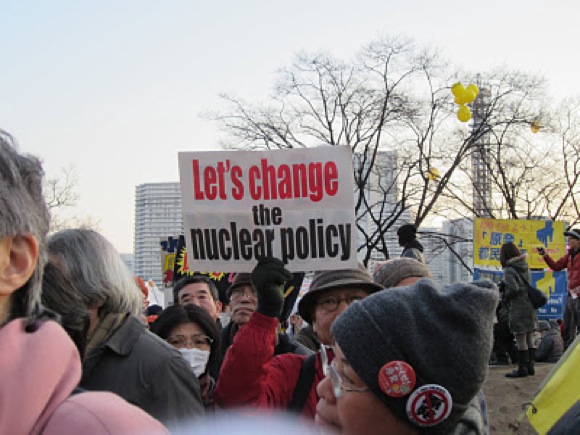
Orchestrate for a safe future for children

Stop the restarting of the nuclear reactors! 10 million signatures
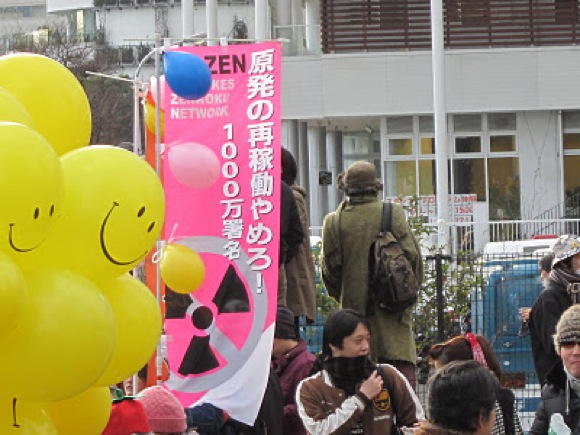
Stop nuclear power--five left!
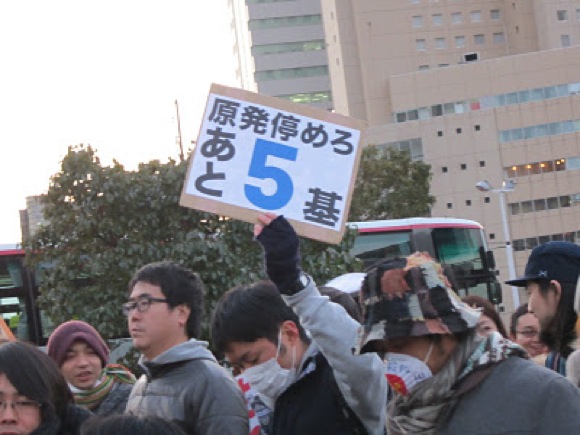
Imagine a future without nuclear power plants
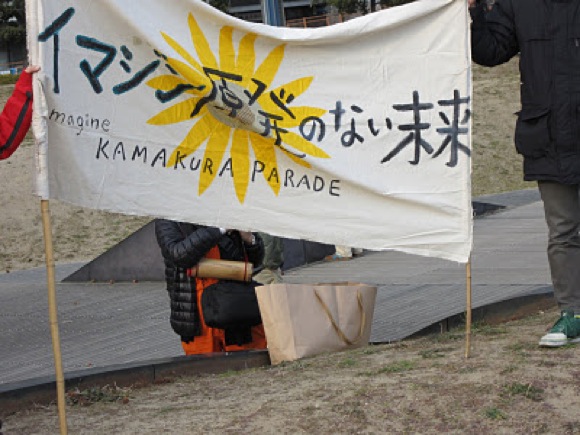
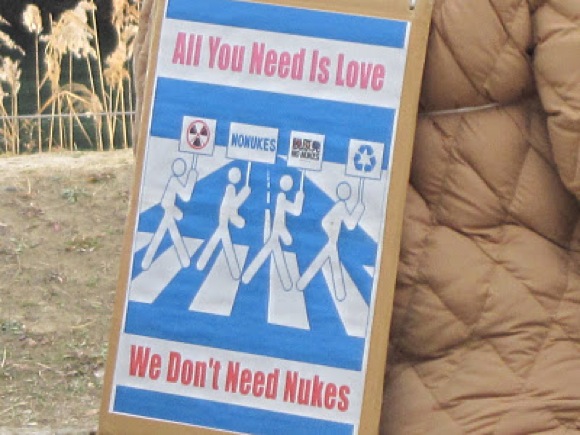
No need for plutonium!
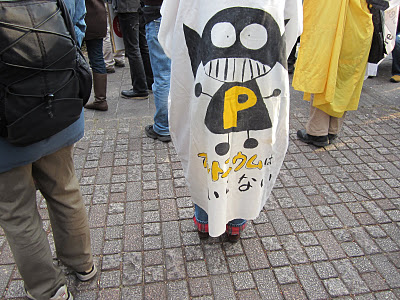
Hate nuclear energy!

Are we going to continue to live terrorizing the countryside?
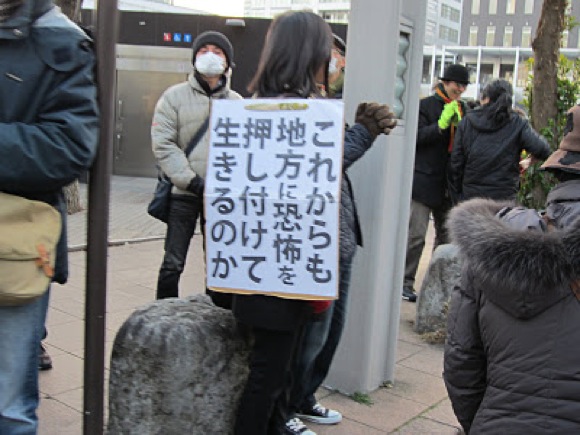

Peace Love Light
tfw
[align=center][color=magenta]Liberty & Equality or Revolution[/align]
reply to post by thorfourwinds
Item
Big Tokyo Earthquake Likely 'Within The Next Few Years'
www.bbc.co.uk...
23 January 2012 Last updated at 10:29 ET
Item
Big Tokyo Earthquake Likely 'Within The Next Few Years'
www.bbc.co.uk...
23 January 2012 Last updated at 10:29 ET
A big earthquake is much more likely to hit the Japanese capital, Tokyo, in the next few years than the government has predicted, researchers say.
The team, from the University of Tokyo, said there was a 75% probability that a magnitude 7 quake would strike the region in the next four years.
The government says the chances of such an event are 70% in the next 30 years.
The warning comes less than a year after a massive earthquake and tsunami devastated Japan's north-eastern coast.
The last time Tokyo was hit by a big earthquake was in 1923, when a 7.9 magnitude quake killed more than 100,000 people, many of them in fires.
Researchers at the University of Tokyo's earthquake research institute based their figures on data from the growing number of tremors in the capital since the 11 March 2011 quake.
They say that compared with normal years, there has been a five-fold increase in the number of quakes in the Tokyo metropolitan area since the March disaster.
They based their calculations on data from Japan's Meteorological Agency, They said their results show that seismic activity had increased in the area around the capital, which in turn leads to a higher probability of a major quake.
www.bbc.co.uk...
reply to post by this_is_who_we_are

Greetings:
Dear reader, we certainly do live in exciting times, and we now may very well be witness
to a tipping point in human history without having to experience the seeming obligatory,
made-for-TV self-immolation pics so prevalent in today’s current events.
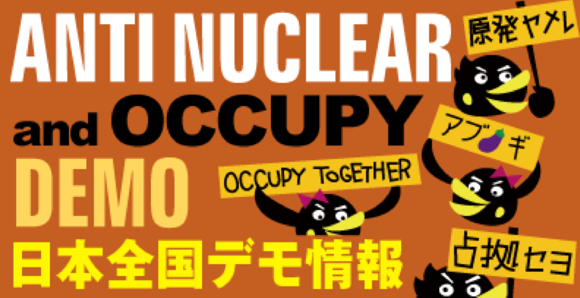
[color=FDD017]The unification of the Occupy and Anti-Nuclear movements worldwide has exploded into the worst nightmare conceivable for the intertwined military industrial complex and the beleaguered commercial nuclear power industry, because an informed, motivated and disenfranchised populace is an enraged monster that cannot be easily returned to the cage.
The Anti-Nuclear and Occupy (ANO) collective is the natural extension of of the violently repressed feelings left over from the gone-to-ground hippies of the turbulent ’60s and present-day American citizens disenchanted with the policies of the current administration and the manifesting awareness of the complicit EPA/USGOV cover-up with the JAPGOV and TEPCO in the mother of all conspiracies - disenfranchisement of the world populace of truthful, quality information enabling them to make educated decisions regarding radiation poisoning and violations of their right to a radiation-free life.
This planet-wide union has been in the mix since the outset of the anti-nuclear movement, and all that was needed was a unifying catalyst to bring the ideas together in one ever-expanding voice: NO NUKES!
Fukushima Dai-ichi provided that catalyst in the worst way and we must now act accordingly or bear the fatal consequences of unending years of continuing nuclear holocaust from the annihilated multiple melt-throughs that continue, unabated, 24/7/365.
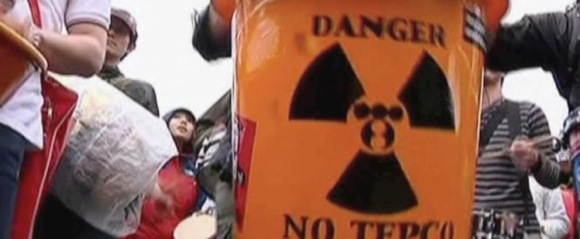
Now, more than ever before, concerned citizens who wish for a nuclear-free future for themselves, their children, and children for all generations to come must take a stand now and demand a radiation-free environment.
Now is the time for all men, women and children to come to the aid of their severely, if not mortally wounded Mother Earth.
But first, just in, Breaking News from Colorado!
"Radiation CPM spikes to 192 today as Colorado continues to undergo daily nuclear fallout from the crippled Fukushima Dai-ichi nuclear power plant."
The same multiple melt-throughs that continue to spew life-altering radiation 24/7/365 with
no end nor solution in sight. The really scary part of all this is, TEPCO has admitted that the technology does not presently exist to “adequately” deal with the crisis.
Just for grins and in an attempt to keep somewhat informed, we monitor a veritable plethora
of radiation monitoring sites around the world, with a particular eye to disturbing trends here
in America, and we offer these readings from Colorado ... the spikes were interesting today:
BTW, the EPA, FDA and the USGOV continue to assure the public that there is no cause for alarm and any erroneous connection between rainwater at [color=Cyan]14,000+% above legal limits and drinking water is contentious to say the least. The fact that there exists nothing to filter out any type of radionuclide from the rainwater flowing from the reservoirs through the city water plants seems to amazingly escape the light of day.
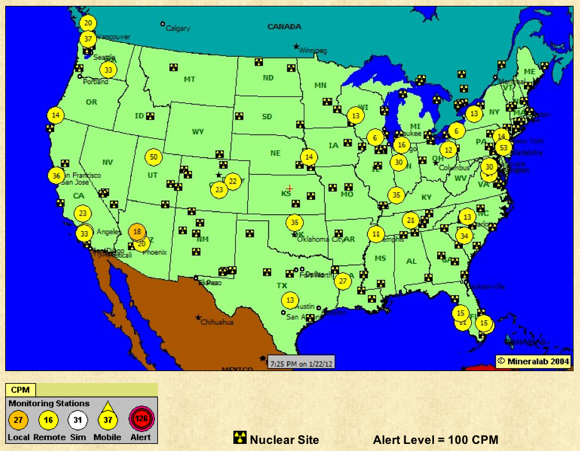
OK, Alert Level = 100, seems simple enough.
So, what do these readings indicate from yesterday, enquiring minds want to know?
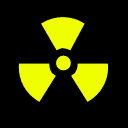 Radiation monitor setup in NE Longmont, Colorado, USA. radmon.stan4d.net...
Radiation monitor setup in NE Longmont, Colorado, USA. radmon.stan4d.net...
Radiation Monitor
@LongmontRadMon
7h
174 CPM, 1.4129 uSv/h, 1.1404 AVG uSv/h, 4 time(s) over natural radiation
Radiation Monitor
@LongmontRadMon
8h
162 CPM, 1.3154 uSv/h, 0.9502 AVG uSv/h, 3 time(s) over natural radiation
Radiation Monitor
@LongmontRadMon
21h
150 CPM, 1.2180 uSv/h, 0.9166 AVG uSv/h, 3 time(s) over natural radiation
Radiation Monitor
@LongmontRadMon
23h
144 CPM, 1.1693 uSv/h, 0.8401 AVG uSv/h, 3 time(s) over natural radiation
Radiation Monitor
@LongmontRadMon
21 Jan
138 CPM, 1.1206 uSv/h, 0.8801 AVG uSv/h, 3 time(s) over natural radiation
Radiation Monitor
@LongmontRadMon
21 Jan
144 CPM, 1.1693 uSv/h, 0.8781 AVG uSv/h, 3 time(s) over natural radiation
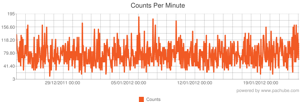

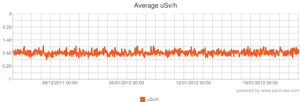
We need a drink!


Peace Love Light
tfw
[align=center][color=magenta]Liberty & Equality or Revolution[/align]

Greetings:
Dear reader, we certainly do live in exciting times, and we now may very well be witness
to a tipping point in human history without having to experience the seeming obligatory,
made-for-TV self-immolation pics so prevalent in today’s current events.

[color=FDD017]The unification of the Occupy and Anti-Nuclear movements worldwide has exploded into the worst nightmare conceivable for the intertwined military industrial complex and the beleaguered commercial nuclear power industry, because an informed, motivated and disenfranchised populace is an enraged monster that cannot be easily returned to the cage.
The Anti-Nuclear and Occupy (ANO) collective is the natural extension of of the violently repressed feelings left over from the gone-to-ground hippies of the turbulent ’60s and present-day American citizens disenchanted with the policies of the current administration and the manifesting awareness of the complicit EPA/USGOV cover-up with the JAPGOV and TEPCO in the mother of all conspiracies - disenfranchisement of the world populace of truthful, quality information enabling them to make educated decisions regarding radiation poisoning and violations of their right to a radiation-free life.
This planet-wide union has been in the mix since the outset of the anti-nuclear movement, and all that was needed was a unifying catalyst to bring the ideas together in one ever-expanding voice: NO NUKES!
Fukushima Dai-ichi provided that catalyst in the worst way and we must now act accordingly or bear the fatal consequences of unending years of continuing nuclear holocaust from the annihilated multiple melt-throughs that continue, unabated, 24/7/365.

Now, more than ever before, concerned citizens who wish for a nuclear-free future for themselves, their children, and children for all generations to come must take a stand now and demand a radiation-free environment.
Now is the time for all men, women and children to come to the aid of their severely, if not mortally wounded Mother Earth.
But first, just in, Breaking News from Colorado!
"Radiation CPM spikes to 192 today as Colorado continues to undergo daily nuclear fallout from the crippled Fukushima Dai-ichi nuclear power plant."
The same multiple melt-throughs that continue to spew life-altering radiation 24/7/365 with
no end nor solution in sight. The really scary part of all this is, TEPCO has admitted that the technology does not presently exist to “adequately” deal with the crisis.
Just for grins and in an attempt to keep somewhat informed, we monitor a veritable plethora
of radiation monitoring sites around the world, with a particular eye to disturbing trends here
in America, and we offer these readings from Colorado ... the spikes were interesting today:
BTW, the EPA, FDA and the USGOV continue to assure the public that there is no cause for alarm and any erroneous connection between rainwater at [color=Cyan]14,000+% above legal limits and drinking water is contentious to say the least. The fact that there exists nothing to filter out any type of radionuclide from the rainwater flowing from the reservoirs through the city water plants seems to amazingly escape the light of day.

OK, Alert Level = 100, seems simple enough.
So, what do these readings indicate from yesterday, enquiring minds want to know?

Radiation Monitor
@LongmontRadMon
7h
174 CPM, 1.4129 uSv/h, 1.1404 AVG uSv/h, 4 time(s) over natural radiation
Radiation Monitor
@LongmontRadMon
8h
162 CPM, 1.3154 uSv/h, 0.9502 AVG uSv/h, 3 time(s) over natural radiation
Radiation Monitor
@LongmontRadMon
21h
150 CPM, 1.2180 uSv/h, 0.9166 AVG uSv/h, 3 time(s) over natural radiation
Radiation Monitor
@LongmontRadMon
23h
144 CPM, 1.1693 uSv/h, 0.8401 AVG uSv/h, 3 time(s) over natural radiation
Radiation Monitor
@LongmontRadMon
21 Jan
138 CPM, 1.1206 uSv/h, 0.8801 AVG uSv/h, 3 time(s) over natural radiation
Radiation Monitor
@LongmontRadMon
21 Jan
144 CPM, 1.1693 uSv/h, 0.8781 AVG uSv/h, 3 time(s) over natural radiation



We need a drink!


Peace Love Light
tfw
[align=center][color=magenta]Liberty & Equality or Revolution[/align]
Ok today in eastern Ontario I wiped half the car winshield with a paper towel and did a freezing rain check for radiation Jan 23rd, 3:15 PM. My first
test at 2:45 pm read 0,29 microseiverts. This 0.73 [5 X background] was my second test at 3:15. At 3:50 I rechecked this same sample [by request] and
35 minutes later it was still reading o.28 to 0.31 microseiverts, steady. [2 X background]. Since my last video, the last few snowfalls have tested as
normal background or just a few points above.


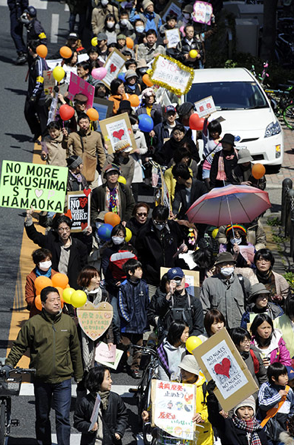
More than 300 anti-nuclear protestors participate in a rally to demand the closing of Hamaoka nuclear power plant in Nagoya, central Japan. The plant is built on the junction of tectonic plates and is considered to be at serious risk in any future earthquake.
Making Hamaoka a special concern to its opponents is the presence of plutonium. Chubu is the only utility in Japan to have signed a contract to process mixed oxide fuel containing plutonium and uranium with the Sellafield plant in the UK.
The industry’s clout, its collusion with government watchdogs and a largely compliant media have helped smother concerns about this potentially explosive collision of state-of-the-art atomic power with primordial seismic instability
UPDATE
The Hamaoka nuclear power plant in central Japan closed its last running reactor on Saturday, after the March quake left another plant in the north-east leaking radioactive material, its operator said.
Chubu Electric Co shut reactor five on Saturday amid concerns over its location near a fault line in Shizuoka prefecture.
Reactor four was shut down Friday, Japanese media reported.
Reactors one and two have already been decommissioned, and number three is currently shut down for routine maintenance.
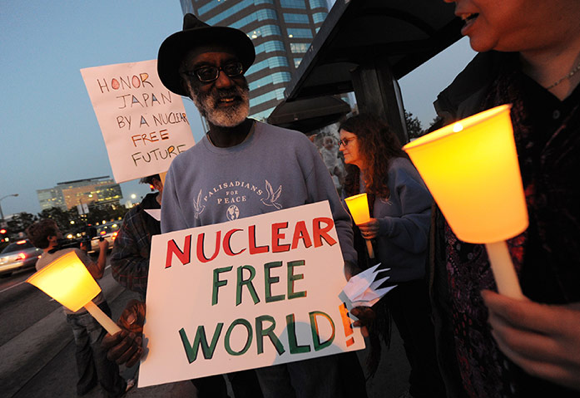
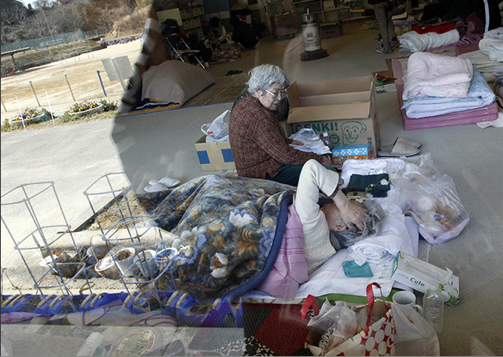
Elderly woman rests on the floor of a classroom at Otsu Elementary School,
which is being used as an evacuation shelter.
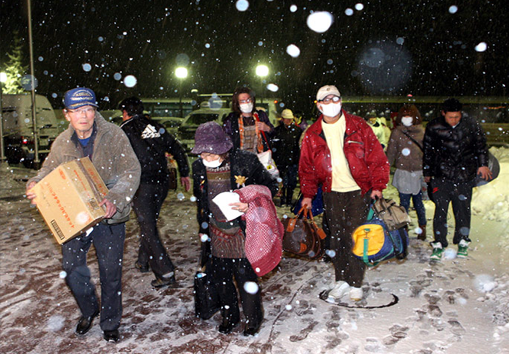
Evacuees from Minamisoma arrive at Kusatsu. Their homes are within 19 miles (30 km)
of the Fukushima nuclear plant.
And under "new business."
We have begun a new “guest editorial” series whereby we present alternative viewpoints
from various individuals without credits. In this way, there is no “baggage” attributed to a particular pseudonym (nobody uses their real name anyway today) and the editorial is considered solely on merit. Stay tuned tomorrow for the reveal of today’s wordsmiths.
Without further ado, let’s get to it.
[color=Cyan]The most dangerous accident that humanity has ever witnessed is happening but don’t worry, the nuclear power industry is ‘safe’. The elites’ media team will have a hard time double-speaking this one. You will see their editorial hands moving every time you see the word safe.
If you want to close your eyes for a second and imagine what is really going on over in northern Japan just imagine the invisible level of energy and radiation like a hot fire radiating out in 360 degrees of direction, including right down into the ground and the waters below, sending death rays (yeah sure, safe ones) hundreds and now thousands of miles away.
[color=Chartreuse]So powerful is this nuclear firestorm that hundreds of miles away it’s unsafe for the children to be drinking the public water. In twelve days the contamination has spread powerfully into the local area where it is becoming unsafe to live. It’s an invisible fire but a deadly one.
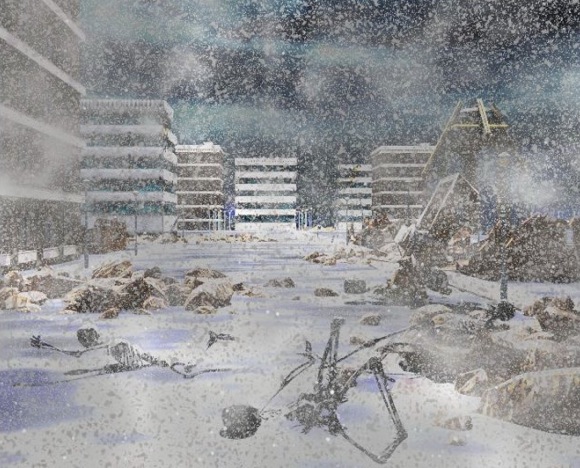
[color=Cyan]Everything is safe to the monsters that have enriched themselves by poisoning humanity and polluting the world. This is a dramatic book about many converging forces that are breaking across the neck of humanity.
[color=FDD017]It really does not help our present world situation that it is mostly psychopaths who roam the top of the human heap and it has always been that way. We have trusted the wrong people and organizations and now we will pay for that huge mistake.
Denial is the name of the toxicity game that industry has played for well over a hundred years. To the chemical industry, then the petrochemical one, on into the pharmaceutical universe and then the atomic one those who make money from toxic substances deny that there is any problem with them in terms of health.

[color=FDD017]Do you think we can relax with the authorities and have confidence that they will get it all under control?
[color=Chartreuse]Can they stabilize the situation?
Or will it get explosively worse?
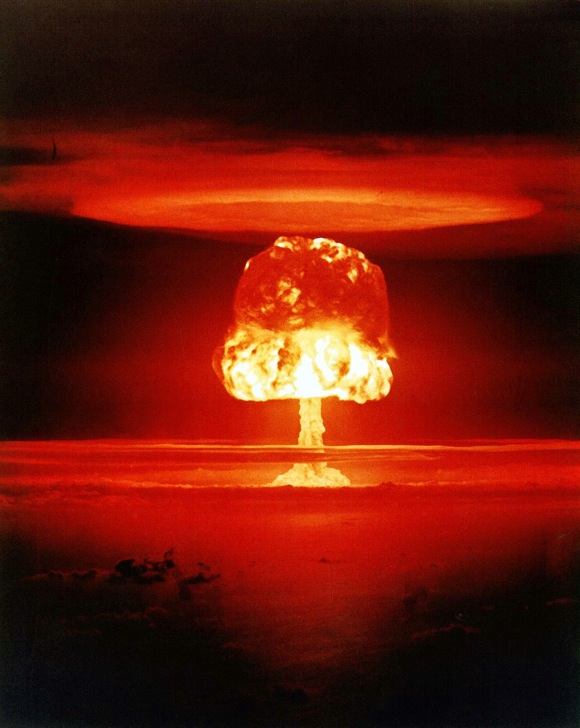


Peace Love Light
tfw
[align=center][color=magenta]Liberty & Equality or Revolution[/align]

reply to post by thorfourwinds
I love your elaborate posts,but ,and don't be offended,but maybe less is more,if you get my drift.
A more direct approach vs flash and a whole lot of stuff for those with ADHD,if ya know what I mean.
BTW,did you catch on to this FEMA website?
fema.ideascale.com...
I love your elaborate posts,but ,and don't be offended,but maybe less is more,if you get my drift.
A more direct approach vs flash and a whole lot of stuff for those with ADHD,if ya know what I mean.
BTW,did you catch on to this FEMA website?
fema.ideascale.com...
reply to post by muzzleflash

Greetings my friend:
We need to keep the horror of this environmental warfare nuclear holocaust on the front page of we, the people's, minds and thoughts in a positive, pro-active way, so as to be a beacon of light in the dark night of a potential nuclear winter, as [color=Cyan]positive thoughts create positive reality.

We certainly do not need any more distractions to further pollute our understanding of manifesting reality. We lightworkers have much to do, and as usual, you are on the front line with your incisive observations.
We salute you and wish you complete safety Godspeed.
On our side of the hill, we have been keeping the Bat Signal lit since 3/11- [color=Chartreuse]Nukushima Day 1, contending that what prevails here in America is a well-organized camouflage, a criminal act, actually, orchestrated by the very same people to whom we entrusted the power to uphold the law, and - by extension, our values - and who are paid to protect US: we, the people.
That’s their damn, strike that, sworn duty!!
Ethics, integrity, responsibility, anyone?
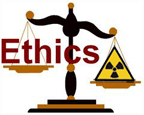
The public health radiation-induced quandry in the United States evidenced by infant mortality rates skyrocketing, the contamination of all open water, agricultural land and the entire food chain, not to mention the broader economic and social implications, has neither been fully acknowledged nor addressed in a comprehensive and meaningful fashion by the very authorities we elected and pay mightily for... for what, pray tell?
This is an undeclared nuclear war perpetrated on the peoples of Earth by an uncaring conspiracy comprised of the JAPGOV/TEPCO, the EPA/FDA/USGOV and the MSM worldwide. We have dealt with war before, and we'll treat this attack on we, the people, as such and respond accordingly, albeit with 40 years more knowledge and ammunition plus newly-freed pent-up frustrations of feeling betrayed by those we trust... we do not forget.
America as a nation state is on the Eve of Destruction, teetering on the brink of a precipice that is surely a fatal fall if we were to plunge into the abyss. Our once-fertile, abundant lands and inland, once-pristine waters are now nuclear fallout contaminated - for how long, no one seems to be sure - hundreds, perhaps thousands of years. The balloon has dropped people, and it's called Nukushima.
Too many parts of our country are already uninhabitable forever, plagued by the broken promises of multiple lackey government agencies and nuclear-friendly-and-paid-for administrations that continued to kick the nuclear radioactive waste can down to road and these once-temporary on-site spent fuel pools and dry canister storage have now become the final resting place for this nightmare abomination that is radioactive - for all intents and purposes - FOREVER.
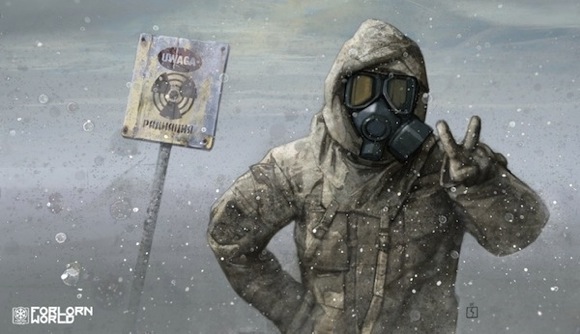
In this light, we are pleased to share a few non-radioactive nuggets to your fine effort.

These are some "fishing" Tweets:
Occupy+Anti-Nuclear Collective = Force to be reckoned with. TEPCO/JAPGOV blink
as radiation cover-up further exposed. DENY IGNORANCE
www.abovetopsecret.com...
RADIATION WATCH 2012+RadWaste in Kyrgyzstan+StarryBrooke intense Yokohama
anti-nuclear rally pics, Passion Personified...DENY IGNORANCE
www.abovetopsecret.com...
DENY IGNORANCE
Radiation Watch 2011:Cold shutdown NUKESPEAK, Yucca Mtn Boondoggle-Now What?
www.abovetopsecret.com...
Mutant' life' is not quality living in our book: What say you? DENY IGNORANCE
www.abovetopsecret.com...
All breadcrumbs dropped along the trail lead back to ATS... so, lead, follow,
or get out of the way!
[color=Cyan]Continue to give 'em hell, Muz... we've got your back.
www.abovetopsecret.com...
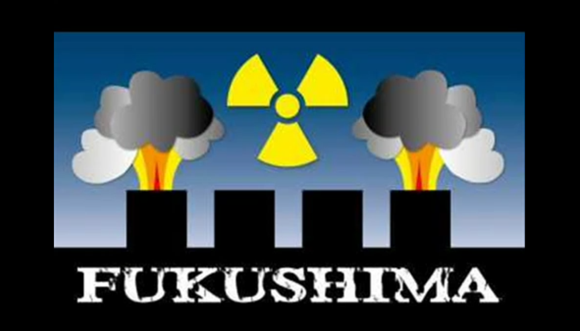
www.abovetopsecret.com...
www.abovetopsecret.com...
click stargate

Peace Love Light
tfw
[align=center][color=magenta]Liberty & Equality or Revolution[/align]

www.abovetopsecret.com...

Greetings my friend:
We need to keep the horror of this environmental warfare nuclear holocaust on the front page of we, the people's, minds and thoughts in a positive, pro-active way, so as to be a beacon of light in the dark night of a potential nuclear winter, as [color=Cyan]positive thoughts create positive reality.

We certainly do not need any more distractions to further pollute our understanding of manifesting reality. We lightworkers have much to do, and as usual, you are on the front line with your incisive observations.
We salute you and wish you complete safety Godspeed.
On our side of the hill, we have been keeping the Bat Signal lit since 3/11- [color=Chartreuse]Nukushima Day 1, contending that what prevails here in America is a well-organized camouflage, a criminal act, actually, orchestrated by the very same people to whom we entrusted the power to uphold the law, and - by extension, our values - and who are paid to protect US: we, the people.
That’s their damn, strike that, sworn duty!!
Ethics, integrity, responsibility, anyone?

The public health radiation-induced quandry in the United States evidenced by infant mortality rates skyrocketing, the contamination of all open water, agricultural land and the entire food chain, not to mention the broader economic and social implications, has neither been fully acknowledged nor addressed in a comprehensive and meaningful fashion by the very authorities we elected and pay mightily for... for what, pray tell?
This is an undeclared nuclear war perpetrated on the peoples of Earth by an uncaring conspiracy comprised of the JAPGOV/TEPCO, the EPA/FDA/USGOV and the MSM worldwide. We have dealt with war before, and we'll treat this attack on we, the people, as such and respond accordingly, albeit with 40 years more knowledge and ammunition plus newly-freed pent-up frustrations of feeling betrayed by those we trust... we do not forget.
America as a nation state is on the Eve of Destruction, teetering on the brink of a precipice that is surely a fatal fall if we were to plunge into the abyss. Our once-fertile, abundant lands and inland, once-pristine waters are now nuclear fallout contaminated - for how long, no one seems to be sure - hundreds, perhaps thousands of years. The balloon has dropped people, and it's called Nukushima.
Too many parts of our country are already uninhabitable forever, plagued by the broken promises of multiple lackey government agencies and nuclear-friendly-and-paid-for administrations that continued to kick the nuclear radioactive waste can down to road and these once-temporary on-site spent fuel pools and dry canister storage have now become the final resting place for this nightmare abomination that is radioactive - for all intents and purposes - FOREVER.

In this light, we are pleased to share a few non-radioactive nuggets to your fine effort.

These are some "fishing" Tweets:
Occupy+Anti-Nuclear Collective = Force to be reckoned with. TEPCO/JAPGOV blink
as radiation cover-up further exposed. DENY IGNORANCE
www.abovetopsecret.com...
RADIATION WATCH 2012+RadWaste in Kyrgyzstan+StarryBrooke intense Yokohama
anti-nuclear rally pics, Passion Personified...DENY IGNORANCE
www.abovetopsecret.com...
DENY IGNORANCE
Radiation Watch 2011:Cold shutdown NUKESPEAK, Yucca Mtn Boondoggle-Now What?
www.abovetopsecret.com...
Mutant' life' is not quality living in our book: What say you? DENY IGNORANCE
www.abovetopsecret.com...
All breadcrumbs dropped along the trail lead back to ATS... so, lead, follow,
or get out of the way!
[color=Cyan]Continue to give 'em hell, Muz... we've got your back.
www.abovetopsecret.com...

www.abovetopsecret.com...
www.abovetopsecret.com...
click stargate

Peace Love Light
tfw
[align=center][color=magenta]Liberty & Equality or Revolution[/align]

www.abovetopsecret.com...
edit on 27/1/2012 by thorfourwinds because: (no reason given)
Originally posted by kdog1982
reply to post by thorfourwinds
I love your elaborate posts, but , and don't be offended, but maybe less is more, if you get my drift.
A more direct approach vs flash and a whole lot of stuff for those with ADHD, if ya know what I mean.
BTW,did you catch on to this FEMA website?
fema.ideascale.com...

Greetings kdog1982:
Thank you for your valuable input, our friend, as we sincerely appreciate all participation and feedback.
Now, go stuff it squid, and fix that button!
Just kidding, of course, as one must attempt to keep some sense of humor in these tumultuous times.
As to the elaborate posts, thank you for noticing the effort.
We have come to the conclusion that presentation is the hook needed to grab that first bit of attention - being able to stand out in the crowd and have a consistent look, feel and message - delivered in a unique format that invites reader participation.
Anyway, that's our story and we're sticking with it.
As far as the fema website... yeah, both you and your bud in this give a good presentation, but we're already volunteer firepersons and first responders/EMTs; enough for now.
We're probably on too many lists already (according to Bobby Powell) and feel we're doing our part to actually effect change in the world by producing EARTH AID.
The world is only one more “event” away from the banishment of the scourge of nuclear energy forever: one event - be that [color=FDD017]a world-wide consciousness-raising multi-media event on a scale eclipsing Live Aid (still, 26 years later, the standard by which other all-hands-on-deck rock and charity events are judged), or the unthinkable - [color=Chartreuse]another Chernobyl, Three Mile Island or Fukushima nightmare disaster/fiasco.
What do enquiring minds really want?
This:
Nuclear Radiation In The Ocean Near Fukushima Now 4,385 Times Above Normal
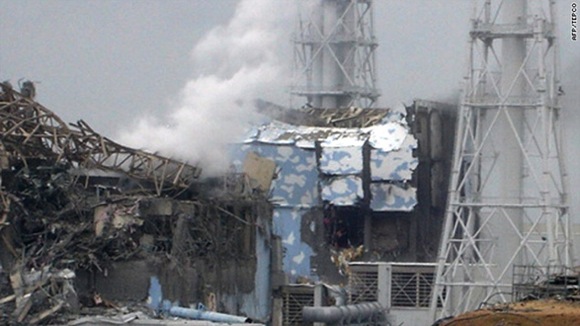
... or this?
Looking Back At Live Aid, 25 Years Later

At one point, according to a stage announcement, [color=Cyan]95 percent of the world's television sets were tuned in to Live Aid — an even more incredible statistic when you consider that it happened before the Internet, cell phones, e-mail, text messaging, streaming video and Twitter.
So what can we do?
We can dream about ambitious possibilities and believe in positive solutions.
We can envision concerned citizens across the world coming together for a fun-filled learning experience and unite all anti-nuclear organizations to speak in a single voice: No Nukes!
We can conceptualize an idea: how about LIVE EARTH AID? ... or working title -
Earth Aid™.
[color=FDD017]Earth Aid™ is dedicated to the creation of an interactive world-wide multi-media event
to raise awareness about the challenges and solutions associated with nuclear energy.
We can say that we now have a raison d'être.
click stargate

Peace Love Light
tfw
[align=center][color=magenta]Liberty & Equality or Revolution[/align]

www.abovetopsecret.com...
edit on 27/1/2012 by thorfourwinds because: color
I love that idea of earth aid!
That is awesome!
BTW:did you see Bob Powells post about his daughter ?
That is awesome!
BTW:did you see Bob Powells post about his daughter ?
Originally posted by Human0815
reply to post by Arbitrageur
I think they just "forget" to find a amount for the final Storage,
When you watch "Into Eternity"
(...)
Japan do not have a Place like this and need to rent Space,
maybe in the U.S. or Australia,
this will be not cheap either,
and most important what is the price for the related Death, Diseases
and the lost of Work Force...
They need to store that Stuff for at least 100.000 Years,
nothing ever existed that stayed so long,
the Pyramids are max. 12-15.000 Years old!
No, no, no - this Stuff is a nasty Stuff
(...)
@ thorfourwinds,
i just want to show you the type of Reports
Tepco need to send when there are broken things like the Pipes:

Greetings friend Human0815:
We see your "Into Eternity," and raise you with this one for your edification and enjoyment:
Fukushima Radiating Everyone: 'Unspeakable' Reality 'Will Impact All Of Humanity'
Exposing the "unspeakable" realities of the Japanese catastrophe in this 60 Minutes program, leading nuclear scientist Dr. Michio Kaku said [color=Cyan]radiation from Fukushima will impact of all of humanity. The nuclear energy power industry violation of the right to health is apparent throughout the new Australian report. [color=Cyan]"In fact, the whole world will be exposed from the radiation from Fukushima," Dr. Kaku told reporter Liz Hayes.
Thank you for providing these prime examples that make our case bulletproof. Funny, it seems like we've heard this bollocks before, and we have the same revulsion to stupidity then as now.
This is classically representative of the chowderhead bravo sierra that continues to be spouted by these industry blatherskites that have only one goal in mind: [color=Chartreuse]obfuscation and disinformation.
Regarding the event which leakage of water containing radioactive materials at the water desalination apparatus (evaporative concentration apparatus) of Fukushima Daiichi Nuclear Power Station on December 4, we have received the directive document *1 from NISA of Ministry of Economy, Trade and Industry "Regarding Response to Leakage of Water Containing Radioactive Materials from Evaporation Concentration Device at Fukushima Daiichi Nuclear Power Station (Direction)."
Egad! Our point exactly.
[color=Aqua]Espouse elucidation!
As for the environmental assessment of the ocean, since the ascertainment of the condition for radioactive material's diffusion is not enough, we only reported the result of monitoring implemented up to date. We will submit the final report to NISA by the end of March, 2012 reflecting the additional analysis results.
End Attachment 1 *The attachment is only available in Japanese.
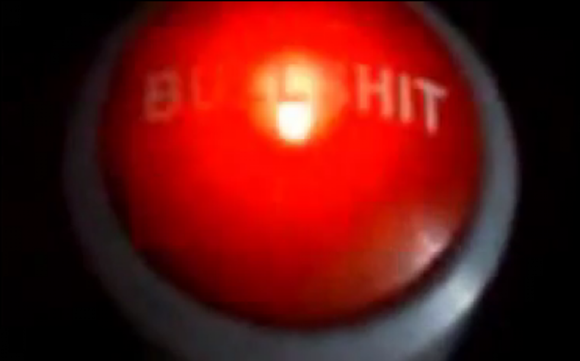
obfuscate, verb
to make (something) unclear to the understanding i.e., irrelevant matters that only serve to obfuscate the fundamental issue of guilt or innocence.
We have provided a Japanese press release version of the instruction document received from NISA in our Japanese website. However, at this time we reserve the right to not provide an English version due to potential misunderstandings that may arise from an inaccurate rendering of the original Japanese text. We may provide the English translation that NISA releases in our press releases. However, in principle we would advise you to visit the NISA website for timely and accurate information.
Can we say, "passing the buck," again?
Also, this might be an indication of a job opening for a friggin' competent translator! WTF?
Nuclear Power Plants In America

Peace Love Light
tfw
[align=center][color=magenta]Liberty & Equality or Revolution[/align]

edit on 1/2/2012 by thorfourwinds because: color
reply to post by thorfourwinds
Item:
Major New Leak At Japan's Nuclear Plant - Kyodo
Reporting by Mark Bendeich
Editing by Kavita Chandran
Wed Feb 1, 2012 5:38pm EST
www.reuters.com...
Major New Leak At Japan's Nuclear Plant
www.abovetopsecret.com...
by PageAlaCearl
started on 2/2/2012 @ 11:51 AM
It just keeps getting worse.
Item:
Major New Leak At Japan's Nuclear Plant - Kyodo
Reporting by Mark Bendeich
Editing by Kavita Chandran
Wed Feb 1, 2012 5:38pm EST
www.reuters.com...
Feb 2 (Reuters) - More than 8 tonnes of water have leaked from Japan's stricken nuclear power plant after a frozen pipe burst inside a reactor buiding, but none of the water is thought to have escaped the complex, Kyodo news agency said on Thursday.
Kyodo, quoting the Fukushima plant's operator Tokyo Electric Power Co (Tepco), said the water had leaked from the No.4 reactor when a pipe "dropped off" but that the liquid had all been contained inside the reactor building.
The plant, on the coast north of Tokyo, was wrecked by a huge earthquake and tsunami in March last year, triggering the evacuation of around 80,000 people in the world's worst nuclear crisis in 25 years. The major leak follows the discovery and plugging of smaller leaks at the same reactor last weekend.
Kyodo quoted Tepco officials as saying the latest leak had been found late on Tuesday night and was stopped by closing a valve. The report did not make completely clear if the leaked water was radioactive but implied it, noting that water inside the No.4 reactor was being used to cool spent fuel rods.
Major New Leak At Japan's Nuclear Plant
www.abovetopsecret.com...
by PageAlaCearl
started on 2/2/2012 @ 11:51 AM
It just keeps getting worse.
edit on 2/2/2012 by this_is_who_we_are because: typos
reply to post by this_is_who_we_are

Greetings:
If so, this is the only water thought not to have escaped the complex since the beginning of this disaster!
What spent fuel rods?
As previously reported:

Peace Love Light
tfw
[align=center][color=magenta]Liberty & Equality or Revolution[/align]


Greetings:
...but none of the water is thought to have escaped the complex...
If so, this is the only water thought not to have escaped the complex since the beginning of this disaster!
Kyodo quoted Tepco officials as saying the latest leak had been found late on Tuesday night and was stopped by closing a valve. The report did not make completely clear if the leaked water was radioactive but implied it, noting that [color=Chartreuse]water inside the No.4 reactor was being used to cool spent fuel rods. www.reuters.com...
What spent fuel rods?
As previously reported:
Unit 4 was shut down and had been in an outage since November 30, 2010.
[color=Cyan]All the fuel was in the spent fuel pool to facilitate reactor pressure vessel shroud work.
The cavity gate was installed, isolating the spent fuel pool from the upper pools. The 4A emergency diesel generator was out of service for planned maintenance, with the 4B emergency diesel generator operable and in standby.
Subsequent analyses and inspections determined that [color=FFF017]the spent fuel pool water levels never dropped below the top of fuel in any spent fuel pool and that no significant fuel damage had occurred. Current investigation results indicate that any potential fuel damage may have been caused by debris from the reactor building explosions.
According to Arnie Gundersen, a nuclear engineer at Fairewinds Associates and a member of the public oversight panel for the Vermont Yankee nuclear plant, which is identical to the Fukushima Daiichi unit 1, the [color=Cyan]failure to maintain pools of water that keep the 20 years worth of spent fuel rods cool could cause “catastrophic fires” and turn the crisis into “Chernobyl on steroids.”
The BBC is now reporting that “spent fuel rods in reactors five and six are also now believed to be heating up,” with [color=00FF00]a new fire at reactor 4, where more spent rods are stored, causing smoke to pour from the facility.
“Japanese news agency Kyodo reports that [color=00FF00]the storage pool in reactor four – where the spent fuel rods are kept – may be boiling. Tepco says readings are showing high levels of radiation in the building, so it is inaccessible.”
At the 40-year-old Fukushima Daiichi Unit 1, where an explosion Saturday destroyed a building housing the reactor, the spent fuel pool, in accordance with General Electric’s design, is placed above the reactor. Tokyo Electric said it was trying to figure out how to maintain water levels in the pools, indicating that the normal safety systems there had failed, too.
Failure to keep adequate water levels in a pool would lead to a catastrophic fire, said nuclear experts, some of whom think that Unit 1’s pool may now be outside.”
[color=00FF00]The rods must be kept cool because otherwise they start to burn and, in the case of reactor number 3, would release plutonium and uranium in the form of vapor into the atmosphere.
“That’s bad news, because plutonium scattered into the atmosphere is even more dangerous that the combustion products of rods without plutonium,” writes Kirk James Murphy.
“We’d be lucky if we only had to worry about the spent fuel rods from a single holding pool. We’re not that lucky. The Fukushima Daiichi plant has seven pools for spent fuel rods. Six of these are (or were) located at the top of six reactor buildings. One “common pool” is at ground level in a separate building.
[color=Cyan]Each “reactor top” pool holds 3450 fuel rod assemblies. [color=00FF00]The common pool holds 6291 fuel rod assemblies. The common pool has windows on one wall which were almost certainly destroyed by the tsunami. [color=FFF017]Each assembly holds sixty-three fuel rods.
This means the Fukushima Daiichi plant may contain over 600,000 spent fuel rods.
There have been massive design issues with the Mark 1 nuclear reactor stretching back three decades. As ABC News reports today, “Thirty-five years ago, Dale G. Bridenbaugh and two of his colleagues at General Electric resigned from their jobs after becoming convinced that the nuclear reactor design they were reviewing — the Mark 1 — was so flawed it could lead to a devastating accident.”

Peace Love Light
tfw
[align=center][color=magenta]Liberty & Equality or Revolution[/align]

new topics
-
Trump-appointed judge blocks Biden administration overtime rule
Social Issues and Civil Unrest: 1 hours ago -
Don't cry do Cryo instead
General Chit Chat: 6 hours ago -
Tariffs all around, Except for ...
Dreams & Predictions: 8 hours ago
top topics
-
Gen Flynn's Sister and her cohort blow the whistle on DHS/CBP involvement in child trafficking.
Whistle Blowers and Leaked Documents: 13 hours ago, 8 flags -
Don't cry do Cryo instead
General Chit Chat: 6 hours ago, 6 flags -
Anybody else using Pomodoro time management technique?
General Chit Chat: 15 hours ago, 3 flags -
Tariffs all around, Except for ...
Dreams & Predictions: 8 hours ago, 3 flags -
Trump-appointed judge blocks Biden administration overtime rule
Social Issues and Civil Unrest: 1 hours ago, 2 flags
active topics
-
Don't cry do Cryo instead
General Chit Chat • 3 • : Flyingclaydisk -
The Acronym Game .. Pt.4
General Chit Chat • 963 • : JJproductions -
Trump picks Gov. Kristi Noem to serve as homeland security secretary
2024 Elections • 45 • : Solvedit -
Trump-appointed judge blocks Biden administration overtime rule
Social Issues and Civil Unrest • 0 • : Cabin -
How can you defend yourself when the police will not tell you what you did?
Posse Comitatus • 85 • : alldaylong -
Tariffs all around, Except for ...
Dreams & Predictions • 13 • : network dude -
Anybody else using Pomodoro time management technique?
General Chit Chat • 9 • : Cabin -
Oligarchy It Is Then
Short Stories • 14 • : UKTruth -
Mike Tyson returns 11-15-24
World Sports • 54 • : angelchemuel -
President-Elect DONALD TRUMP's 2nd-Term Administration Takes Shape.
Political Ideology • 205 • : WeMustCare

